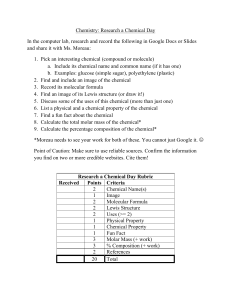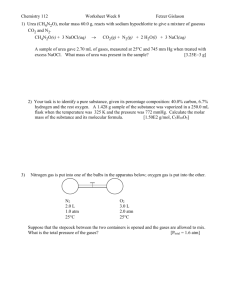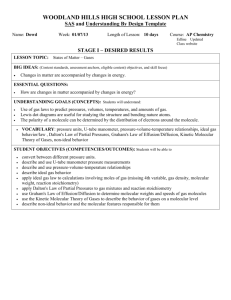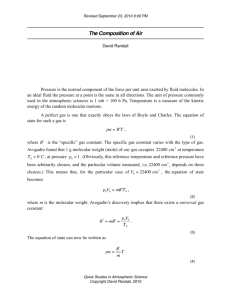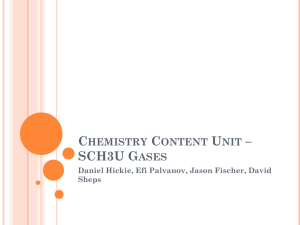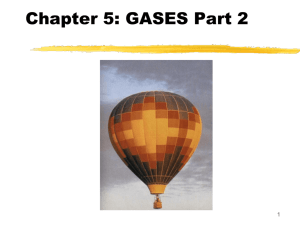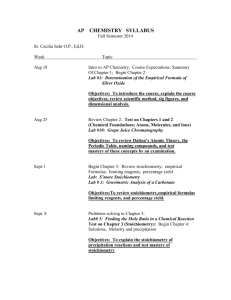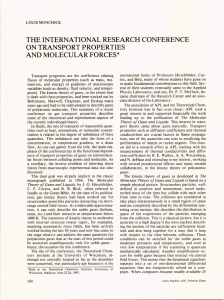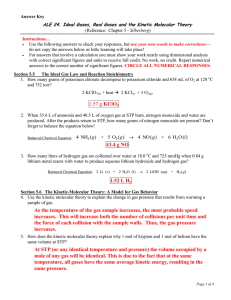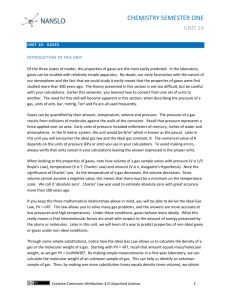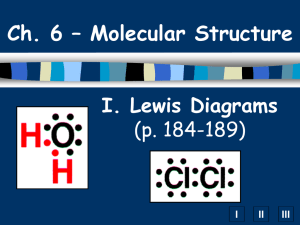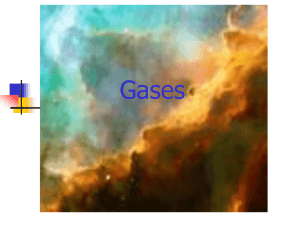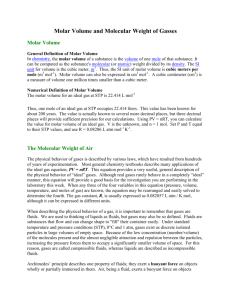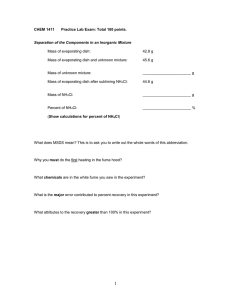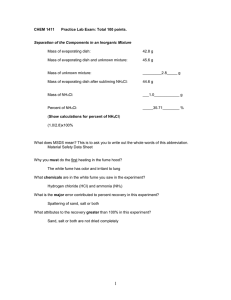Chem 101 -Exam 2 Study Guide
advertisement
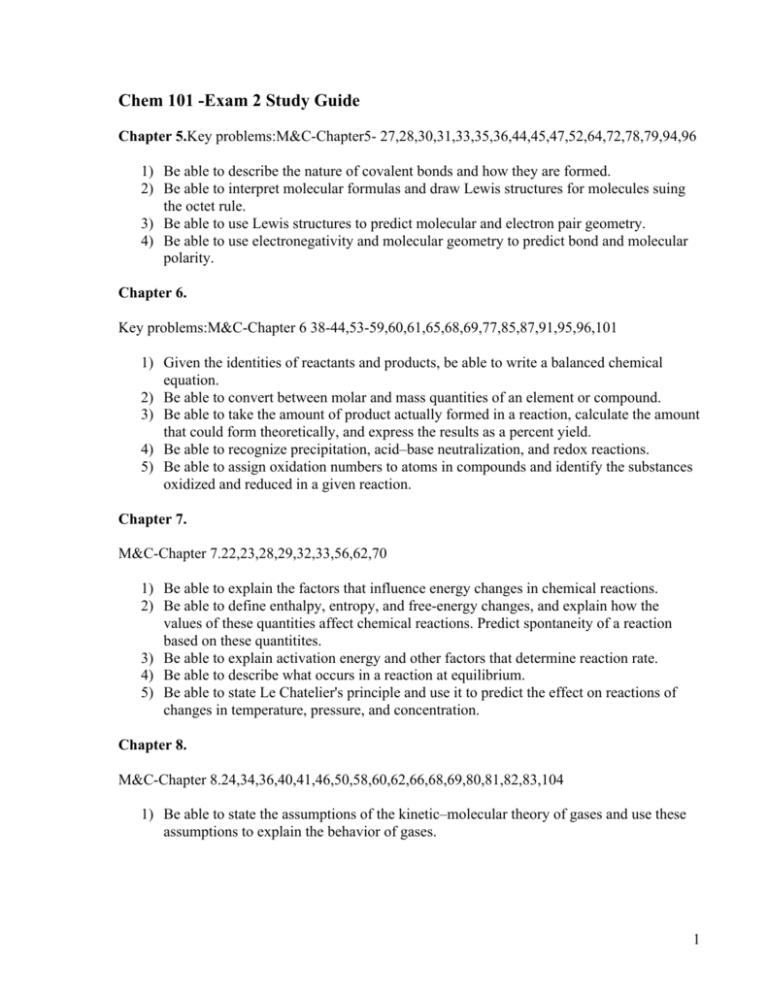
Chem 101 -Exam 2 Study Guide Chapter 5.Key problems:M&C-Chapter5- 27,28,30,31,33,35,36,44,45,47,52,64,72,78,79,94,96 1) Be able to describe the nature of covalent bonds and how they are formed. 2) Be able to interpret molecular formulas and draw Lewis structures for molecules suing the octet rule. 3) Be able to use Lewis structures to predict molecular and electron pair geometry. 4) Be able to use electronegativity and molecular geometry to predict bond and molecular polarity. Chapter 6. Key problems:M&C-Chapter 6 38-44,53-59,60,61,65,68,69,77,85,87,91,95,96,101 1) Given the identities of reactants and products, be able to write a balanced chemical equation. 2) Be able to convert between molar and mass quantities of an element or compound. 3) Be able to take the amount of product actually formed in a reaction, calculate the amount that could form theoretically, and express the results as a percent yield. 4) Be able to recognize precipitation, acid–base neutralization, and redox reactions. 5) Be able to assign oxidation numbers to atoms in compounds and identify the substances oxidized and reduced in a given reaction. Chapter 7. M&C-Chapter 7.22,23,28,29,32,33,56,62,70 1) Be able to explain the factors that influence energy changes in chemical reactions. 2) Be able to define enthalpy, entropy, and free-energy changes, and explain how the values of these quantities affect chemical reactions. Predict spontaneity of a reaction based on these quantitites. 3) Be able to explain activation energy and other factors that determine reaction rate. 4) Be able to describe what occurs in a reaction at equilibrium. 5) Be able to state Le Chatelier's principle and use it to predict the effect on reactions of changes in temperature, pressure, and concentration. Chapter 8. M&C-Chapter 8.24,34,36,40,41,46,50,58,60,62,66,68,69,80,81,82,83,104 1) Be able to state the assumptions of the kinetic–molecular theory of gases and use these assumptions to explain the behavior of gases. 1 2) Be able to use Boyle's law, Charles's law, Gay-Lussac's law, and Avogadro's law to explain the effect on gases of a change in pressure, volume, or temperature. 3) Be able to use the ideal gas law to find pressure, volume, temperature, or molar amount of a gas sample. Know what STP means 4) Be able to use the ideal gas law with chemical equations involving gases to calculate volumes, masses, etc.. 5) Be able to define partial pressure and use Dalton's law of partial pressures. 6) Be able to explain dipole–dipole forces, London dispersion forces, and hydrogen bonding, and recognize which of these forces affect a given molecule. A Parting Comment: USE THE STUDY GUIDE BOOK. It's really pretty good! 2
